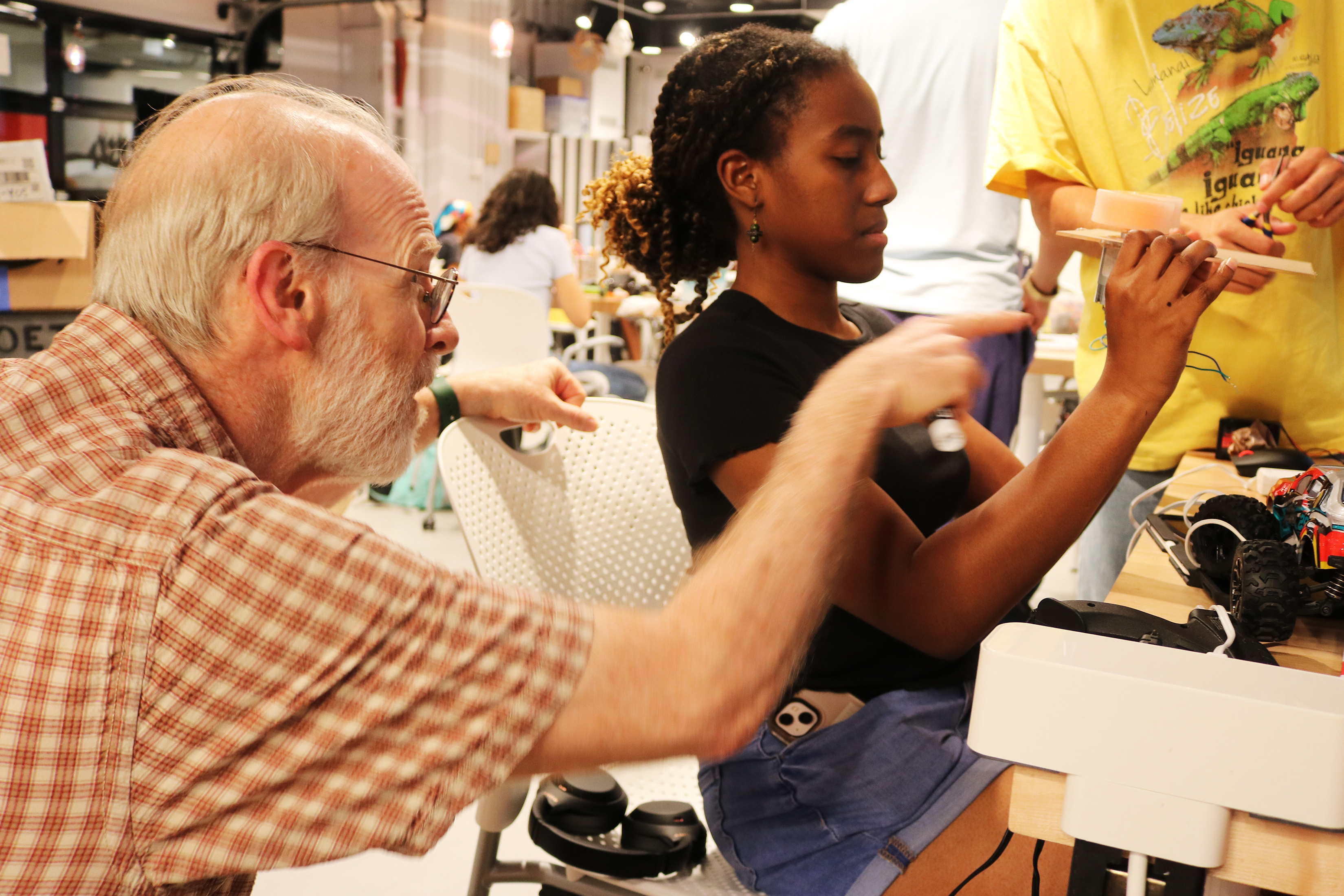Edgerton Center Instructor Takes ‘Mens et Manus’ Mindset on the Road
-
-
MIT Technology Review
Filed Under
Recommended

As a technical instructor at MIT’s Edgerton Center, Ed Moriarty ’76 is on a mission to share what he calls the “collaborative spirit and curiosity-driven initiative that is at the heart of the MIT experience.” Over the past 15 years, that mission has taken him all over the world.
Moriarty began his educational travels by helping a friend, Jeff Drake ’75, with a summer science program for high school students in Alaska in 2008. Soon the opportunities for collaboration snowballed. With support from Edgerton Center K-12 Outreach, Moriarty started leading programs in other states and then other countries—often invited by people inspired by their experience at MIT.
In 2015, for example, a math and physics teacher visiting the Edgerton Center was so amazed by the hands-on experimentation that she asked Moriarty to lead a workshop for her students in Ferrara, Italy, in 2018. This began an ongoing collaboration known as EdVentures that supports workshops in Spain and Italy.
"What I’m doing is creating that space where adults don’t drive the agenda; students do," Moriarty says.

During the pandemic, Moriarty pushed Zoom to its limits to run remote workshops for students on five continents. In January 2023, he ran a hackathon in Spain for 110 students from 11 schools. Students in these workshops create everything from paper airplanes to motion-activated light sabers and assistive technologies.
“It’s magical,” Moriarty says—but he’s not talking about the projects. He is referring to the impact hands-on learning has on students, who go on to design their own projects and to mentor others. “That’s the empowering aspect of what I do,” he says.
In Italy, for instance, teens who once learned science only from books and had never held a screwdriver teamed up to build a pendulum wave mechanism that plays the glockenspiel.
Moriarty typically brings MIT alumni, students, and colleagues along on his trips as instructors and to model teamwork. “The students get to see how we interact as a group: interested in each other’s opinions, challenging preconceived notions, wondering about interesting proposals, and sharing a passion to try something new,” he says. “My goal is to create collaborative communities to encourage experiential learning.”
He draws his teams from the rich network he’s built up over decades at MIT. “I’m a lifer,” he says—and that’s almost true. Raised in Pennsylvania, Moriarty came to MIT in 1971 and, for the most part, has stayed ever since. After graduating with a degree in mechanical engineering, he briefly worked as a solar and wind power engineer but soon returned to the Institute.
Initially, he worked in the Energy Laboratory, building on experience he’d gained there through the Undergraduate Research Opportunities Program (UROP). Then, in the 1980s, he helped faculty develop and deploy Athena, MIT’s networked computing infrastructure for education. In the 1990s, he served as director of departmental computing for the Department of Electrical Engineering and Computer Science. And in 2000, after taking a couple of years off to focus on parenting his two sons, he joined the Edgerton Center.
There, he teaches maker seminars—including a summer program for high school students known as the Engineering Design Workshop—and has mentored many of the Institute’s student engineering design teams. He also runs “The Saturday Thing”—open hours held every weekend for anyone who wants to drop in and experience the creative, supportive community found in the Edgerton Center’s Student Project Lab (housed in 4-409, “Doc” Edgerton’s old lab).
The work has earned Moriarty numerous accolades from the Institute, including most recently the Gordon Y. Billard [Class of 1924] Award for service to MIT of outstanding merit and the Excellence in Mentoring Award for special dedication to first-year students.
Still, Moriarty sees his job as fundamentally simple. “What I’m doing is creating that space where adults don’t drive the agenda; students do. Their interest and curiosity and imagination take center stage,” he says. “You don’t need makerspaces to do what we do. It’s mind, hand, and heart.”
This article also appears in the September/October issue of MIT News magazine, published by MIT Technology Review.
Top photo: Ed Moriarty '76 works with grad student Mariabelle Azemar on a project to shoot ping pong balls from a remote-controlled car. Credit: Sonny Oram, Edgerton Center







